
Democracy and Class Struggle welcomes this analysis of Hong Kong's Umbrella Movement has it is near to our perspective here :
"A populist perspective prevents the recognition of any antagonism internal to “the people,” transposing the source of all conflict outward onto external groups, whether defined by race, national origin or simply immigration status.
When such populism is predominant, riots, property destruction and even “impoliteness” on the part of protestors will be invariably written off as the work of “outsiders”—in this case, mainland Chinese—at least until they generalize.
But strikes have a much greater propensity to break such a populist logic, since they immediately make visible antagonisms internal to the given society".
Black Versus Yellow
Class Antagonism and Hong Kong’s Umbrella Movement
PART 1
The History
Global CityItinerant shoppers pose for selfies as the skyline of the finance district across the bay bursts into a kaleidoscope of green and yellow lights. Below them, the waters of Victoria Harbor stir quietly, foreboding a typhoon. Despite the churning water, the nearby cruise ship hardly seems to move. It is docked to the pier at Tsim Sha Tsui, its gangplank descending into one of the most luxurious shopping malls in East Asia, a convenience allowing wealthy visitors from all across the world the ability to disembark from one climate-controlled environment to another without ever leaving the safety of AC and well-trained security. Once off the ship, they can spend money tax-free at the city’s most fashionable restaurants and retail outlets, eating Japanese BBQ and then gliding over polished floors to browse retro British outfits at a boutique marketing 20s-style colonial chic.
Outside on the dock, rain starts to splatter down on the selfie-takers’ outstretched iPhones. A young girl sings old Cantonese pop songs, even though everyone listens to K-pop now, accompanied by her boyfriend’s out-of-tune guitar. People drop a few serrated Hong Kong coins into their donation jar. The wind begins to pick up, washing away the Cantonese tones as it sweeps static across the microphone. Behind her, the cruise ship sits white and motionless.
This is the battle that is Hong Kong: Old Cantonese love songs hurled into the growing wind of a typhoon, torn apart before they reach the walls of lifeless Cruise ships and shopping malls looming under the lights of the financial district. Here spectacle confronts stubborn humanity in the archetypal “global city,” designed to allow capital to filter through the port, banks and real estate markets to plunder the Asian mainland without ever having to pass outside the safety of climate control and security cordon.
For many years, Hong Kong was little more than a backwater colonial leftover, with living standards hardly better than those seen in the other hubs of European activity in Asia. After the mainland Chinese Revolution, foreign support for industrial development and agrarian reform poured into the city as a hedge against insurgency, but living standards and welfare programs were not immediately forthcoming. The colonial regime was still a brutal one, ruling over an unstable society and struggling to accommodate an influx of immigrants.
In the decades following the mainland Revolution, spates of rioting were common. Riots in 1956 marked the beginning of what would soon become repeated conflicts with the British government. In the spring of 1966 another wave of rioting began which culminated a year later with the 1967 Hong Kong riots, the largest domestic disturbance in the city-state’s history, which saw massive strikes paired with city-wide street-fighting against police, the bombing of government offices and targeted attacks against right-wing media outlets. In the end, after 18 months of open rebellion, millions of dollars of property had been destroyed, some five thousand were arrested, two thousand convicted, and many communists deported to the Chinese mainland.
Following the 1967 riots, the government began a massive expansion of the welfare state, with the “Colony Outline Plan” proposing to house nearly a million people in new, cheap, state-built public apartment complexes.
The massive build-up in manufacturing seen since the 1950s was finally paired with moderate wage increases, and Hong Kong’s position as one of the early “Asian Tiger” economies was secure. By the 1980s the city was an integral link to a newly-opened China, both through its geographical proximity to China’s first Special-Economic Zone across the water in Shenzhen and because of its historical connections to the Chinese mainland. It was in these decades that the foundation was laid for the “global city,” often very literally: Li Ka-shing, one of the richest men in the world, made his fortune in Hong Kong by buying properties at bargain prices following the 1967 riots.
Today, those properties form the backbone of the city, and Li not only owns major skyscrapers in the financial district, but also the port itself, one of the busiest in the world.
It was this port and the financial structure surrounding it that allowed Hong Kong to step out of its role as a manufacturer and into its role as an administrative center for global capitalism in the 1980s. As manufacturing shifted toward the port cities in China’s mainland, Hong Kong became an ideal location for the management of these new industrial hubs and a key re-export node for the Asian mainland. Many of the new Chinese factory zones were themselves piloted by capital from Hong Kong, Singapore and Taiwan, as well as more far-flung members of the Chinese diaspora. Asian foreign-direct investment in China today still exceeds that of the US or Europe—often in partnership with or on behalf of Japanese capital.[i]
Today, the Hong Kong border with the mainland is a perfect image of this divide. On the Shenzhen side, breakneck development sprawls up against the riverside: faceless, half-empty apartment towers cluster together under the haze of pollutants. On the Hong Kong side, greenery abuts the river, the entire border region turned into a nature reserve and agricultural zone guarded by the military, where one needs a special license just to enter the forest. At first glance, the two worlds appear to be antagonistic: the uncontrollable, environmentally devastating growth of sprawling Shenzhen piling up against the idyllic greenery of its “post-industrial” neighbor. In reality, this antagonism is a sign of the deepest interdependence. Each side of the divide is co-constituted by the other. Shenzhen wouldn’t have been built without Hong Kong capital. And Hong Kong would never have become a desert of shopping malls, office towers and carefully crafted agrarian idylls without the factories of Shenzhen.
The Generation with No Future
Hong Kong’s boom years were crafted by its own boom generation—largely the children of immigrants who had fled to the island first during the Sino-Japanese war, and then during the civil war between Nationalist and Communist armies in the later 1940s. As in US, Europe and, ironically, mainland China, it was this baby boom generation which, though staffing some of the revolts of the 1960s and early 1970s, was ultimately defined by the defeat of these movements, with a significant fraction of the generation turning against those engaged in these revolts in exchange for a secure position within the restructured global economy. In Hong Kong, this meant the construction of one of the world’s most extensive experiments in laissez faire capitalism—one still often lauded by conservative commentators.
But this has also created a squeeze effect on those coming after the baby boom generation. Raised on examples of pull-yourself-up-by-your-bootstraps billionaires like Li Ka-shing, by parents who themselves made a killing in the unregulated industrial slaughterhouse of Shenzhen’s heyday, many of Hong Kong’s younger people are now faced with nothing but soulless service jobs and repeated economic crises, first in 1997, then in 2007. Forced into cut-throat competition for spots in top universities, even those students who succeed in this system are then made to fight for life-crushing corporate jobs where they will work for abysmally long hours and still be spending an average of 40% of their income on housing.
Today, 8.5% of Hong Kong households have a yearly income of one million dollars or above, and the city hosts one of the largest super-prime housing markets in the world. At the same time, a massive housing shortage exists alongside skyrocketing prices and hundreds of thousands of empty apartments, purchased by the wealthy as speculative investments. The city is one of the densest in the world and housing prices are so high that many young people are forced to live with their parents well into their thirties, while many of the poor are expelled out to public housing in “new cities,” from which they have to commute back into Mongkok or Wanchai to work. Others are forced to find unsafe, painfully small slum units built on the tops of buildings and in the interstices of alleyways—with more than 50,000 residents estimated to literally live in cages.
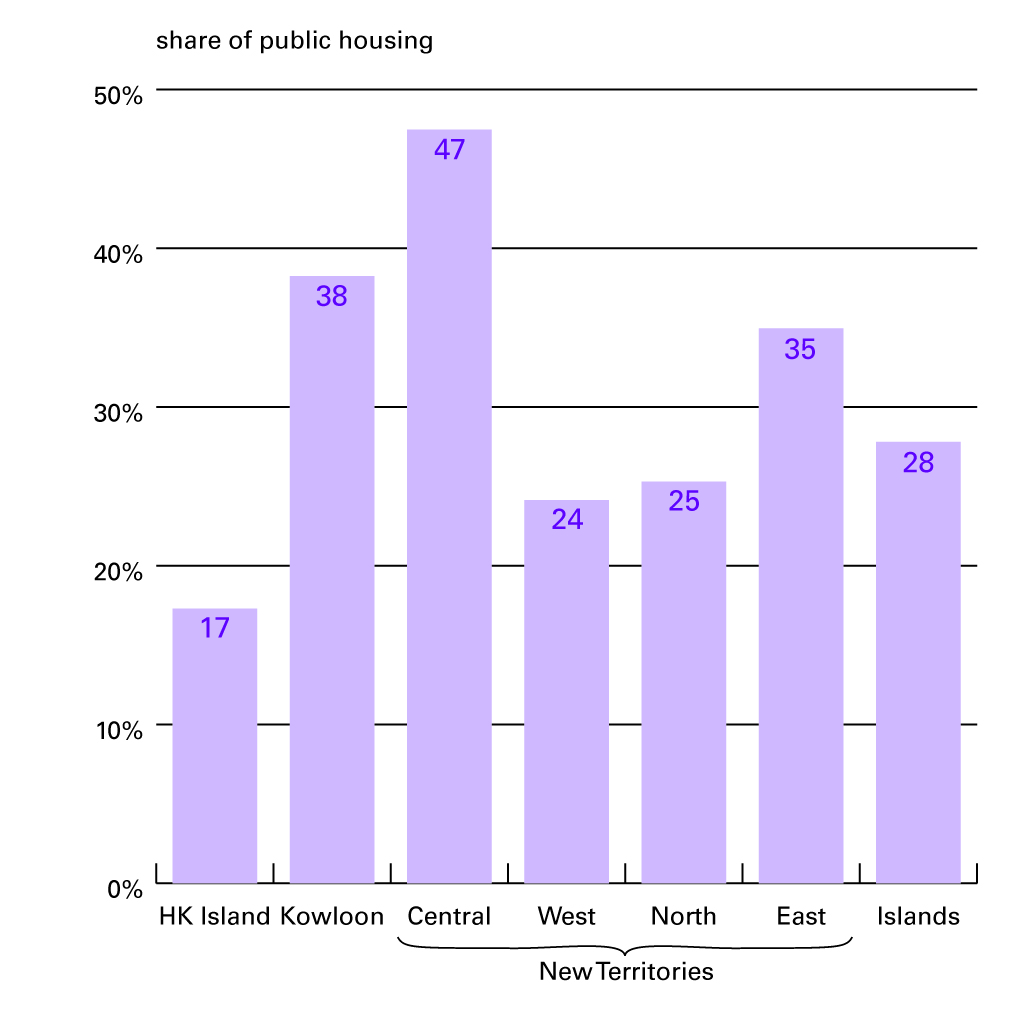
Most of Hong Kong’s public housing is located in the new cities, located in the “New Territories” far from the island’s main urban core. Details on this chart can be found at the original source, here.
In all, the country’s gini coefficient, at .537, is one of the most unequal in the developed world, and upwards of 20% of the population lives under the poverty line. Migrant laborers are routinely abused, collective bargaining is illegal and the city had no minimum wage at all until 2010, when it was set to a meager 28 HKD per hour—not even enough to ride the subway from Mongkok to the airport. Meanwhile, wealthy foreign businessmen are paid enough to afford premium flats in the mid-levels, a neighborhood constructed in the colonial era to accommodate British functionaries fleeing an outbreak of the plague in the lowland
Even though Hong Kong is by no means in the same “anomic breakdown” as places like Greece, the over-worked, over-shopped, over-crowded youth of the city seem to have much in common with the unemployed, underpaid youth of an emptying Athens.
Faced with a foreclosed future, many youth have decided to simply leave: emigration from Hong Kong is now increasing at the fastest rate since the mass-emigration of the pre-handover period of the early 1990s.[ii] Despite relatively low unemployment (four to five percent) due to a still-ascendant East Asia, there are more subtle signs of the crisis: demand for mental health services has more than doubled in the past decade, it is commonplace now to hear people speaking about the cultural “death” of Hong Kong, and what used to be routine protests against government developments and the mainland government quickly snowball to increasingly uncontrollable proportions.
The recent student strike and (re)occupation of the Central district (and now Admiralty, Mong Kok, Causeway Bay and several other key nodes in the city) are only the latest in a series of such events.
Despite being located at a more privileged position in the division of labor, the youth in Hong Kong are clearly participating in the same global dynamic of revolt spearheaded by young people worldwide following the financial crisis that began in 2007/2008. The people involved in these events are, precisely, “ultras”—those members of our “generation with no future” who have sensed the looming economic, environmental and social doom all around them and chosen to fight back. Worldwide, there are major differences in the origin and experience of those engaged in these activities. Some are students, some are street kids, soccer hooligans or service workers. Coming from such divergent backgrounds, these revolts have been marked by what the communist theoretical collective Endnotes calls the “composition problem,” wherein “class fractions that typically keep their distance from each other were forced to recognize one another and sometimes live together.” The problem embedded in this is the question of how a movement might “compose,” “coordinate” or “unify” “proletarian factions, in the course of their struggle” when faced with these divergent experiences, especially as the social base of the movement begins to grow. The result has been the production of movements that, though broadly resonant with large segments of the population, are ultimately inchoate on the ground.
Pan-Democrats and Passionate Citizens
Each of these revolts, whether in Egypt, Greece or Missouri, has been profound in its potential but also crippled by this political incoherence and practical inexperience. Some places, like Greece and Spain, have a more cohesive left-wing political tradition that is now being rediscovered and revived by young people.
Other areas, however, have seen sharp turns to the right, as far-right groups in places like the Ukraine and Thailand have outmaneuvered others in their ability to defend, extend and coordinate the movement, drawing more of this disaffected generation into their ranks.
Hong Kong, unfortunately, sits closer in many respects to these latter examples than the earlier ones. After 1967 the communist-leaning left had lost much of its mass base and was ruthlessly dismantled by the police. Meanwhile, the state began giving concessions to workers, students and others in exchange for their participation in the project of economic restructuring. Hong Kong’s own Cold War climate, relative to China, persisted even after the opening of the Chinese economy to foreign capital, further preventing the resuscitation of any sort of substantial communist left in the city-state by forcing every nascent radical grouplet to take a position on the “China question.”
Any “violence” in a protest is, to this day, invariably explained as the work of CCP provocateurs from the mainland.
The result has been that Hong Kong’s so-called “left,” has for decades been dominated by a naïve discourse of “democracy” against mainland “authoritarianism.”
Inspired by the Tiananmen Square uprising in Beijing and terrified by the ruthlessness with which it was crushed, most of Hong Kong’s radical students since 1989 accepted at face value the mainstream media portrayal of Tiananmen as a student-led movement for “democracy.”
In Beijing, despite the widespread participation of non-students, the formation of the Beijing Autonomous Workers’ Federation, and the state’s decision to charge worker-participants with far higher crimes carrying much longer sentences than their student counterparts, it was the students who were able to dominate the messaging of the movement and appeal to western liberal audiences with calls for the liberalization of the political and economic system.
This was the distorted image of the movement transmitted to viewers in the US and Europe, and its influence was only amplified in Hong Kong.
The first immediate effect was the formation of the “Hong Kong Alliance in Support of Patriotic Democratic Movements in China,” which began to bring together figures such as Szeto Wah, Martin Lee, and Lee Cheuk-yan, all of whom were quickly attacked by the mainland government. Two years later, in 1991, Hong Kong held its first direct elections, which saw a landslide victory for the electoral alliance between the United Democrats of Hong Kong and the liberal Meeting Point party, alongside an amalgamation of smaller liberal-leaning parties. The 1991 election is seen as the birth of the “Pro-Democracy” camp, which has splintered and reunified several times in the twenty years since. Today, these electoral parties, alongside a loose amalgamation of academics, activists and NGOs, are broadly referred to as the “pan-democrats.”
A key component of the pan-democrats’ activist wing has been the secondary-school organizations such as Scholarism, formed to protest the Chinese government’s “political education” curriculum, and the Hong Kong Federation of Students (HKFS), which is elected by the student unions the city’s seven major universities.
Though these organizations technically have a very broad base, their leadership is almost universally in line with the pan-democrats, and they seek a legalistic and polite path to reform.
Even while the student organizations often force the more institutionalized wing of the pan-democrats to take action in an uncertain situation, many of these student groups still pride themselves on “Hong Kong civility,” even going so far as to condemn those who fight back when police attack protesters. At each stage of recent political events in Hong Kong, HKFS and groups like Scholarism have played both a leading and an ultimately stifling role. From protests against developments in the New Territories to the brief occupation following this year’s annual July 1st march, the student groups have been integral to getting the protests off the ground, but almost universally falter when faced with actual police repression.
This has created a situation where Hong Kong’s young protestors are stretched between an ideologically weak but well-funded “pan democrat” liberalism and its far-right variant, loosely grouped around the 人民力量, or “People Power,” party and its followers, called 热血公民, or “Civic Passion.” Though they officially have no position on questions of immigration, Civic Passion has widely accepted far-right Hong Kong nationalists into their organization and their yellow-shirted membership can frequently be spotted at rallies telling immigrants (particularly mainland Chinese) to leave.
Consistent with nationalist politics elsewhere, Civic Passion tends to obscure class conflict with the language of national belonging. In terms of political analysis, many are more similar to people like Ron Paul and Alex Jones than to anything recognizably leftist. Rather than seeing the true role of the international capitalist class in the looting of Hong Kong’s future, they only see the role played by mainland capitalists in this process.
More dangerously, they then attribute a completely false role to thousands of poorer mainlanders who have migrated to Hong Kong (or simply visit as less wealthy tourists), portraying them as locusts come to infest the city and drain it of all its resources.
Anti-mainland sentiment is a widely accepted and very public form of racism in Hong Kong, clearly visible on the surface of everyday life. In 2012, Apple Daily, one of the few media outlets without direct or indirect censorship from Beijing, ran a full-page ad that portrayed a giant locust looming over Hong Kong, asking:
“Are you willing for Hong Kong to spend one million Hong Kong Dollars every eighteen minutes to raise the children born to mainland parents?”
Then, earlier this year, over 100 people joined an “anti-locust” campaign, marching to Canton Road—a site of many expensive jewelry shops favored by wealthier mainland tourists—with signs that said things like “go back to China” and “reclaim Hong Kong,” yelling abuse at any mandarin-speaking bystanders. In moments of exacerbated social tension, this everyday racism is a convenient pressure-release, structured such that it both divides the protestors and prevents them from looking across the border to find their natural allies in the rioting migrant laborers of the Pearl River Delta.
But, when disillusioned by the conservatism of the pan-democratic alliance, groups like People’s Power and Civic Passion are the first visible alternatives, since they have been some of the few groups willing to attempt more militant actions. In only a few years these groups have seen a marked increase in popularity, as young people have watched the pan-democrats’ vigils and party-pandering going nowhere. To take the most frequently cited example:
On June 4th, the mainstream democratic parties hold an annual candlelight vigil to commemorate the 1989 Tiananmen Square movement. Civic Passion began a yearly alternative rally, more militant but also interspersed with nationalist (what they call “localist”) and racist slogans. In 2013, their alternate rally only brought together around 200 people, but by 2014, it had attracted 7,000. Attendance at the official vigil shrank by tens of thousands in the same interval, though this main event still remained far larger.
In today’s “Umbrella Revolution,” it may appear that anti-mainland groups have again been sidelined. But past experience shows that, when the pan-democrats begin to falter through their own inaction, only the far-right has been capable of pushing for tactical advances capable of winning over increasingly militant swaths of the youth. Politics in Hong Kong has been running up against this wall for years now.

A sticker protesting “Colonization” and “New Hong Kong People” — i.e., mainland Chinese — pictured in Mong Kok prior to the newest Occupation.
OG Occupy and the Port Strike
The current “Occupy Central” group—technically “Occupy Central with Love and Peace”—tends to obscure the existence of Hong Kong’s original Occupy Central.
Like Occupy in the US, Hong Kong’s 2011 Occupation targeted a downtown financial center, raising tents in the bottom level of the HSBC building in the heart of the city’s finance district. Though Occupy Central was among the longest-lasting of any of the 2011 Occupations (starting in October 2011 and ending around September 2012), it saw much smaller numbers than elsewhere, with only hundreds participating at the height of the movement. Nonetheless, it marked a new era of civil unrest in the small city-state, and many of the participants in the original Occupation went on to build the groundwork that made the current movement possible, organizing against the New Territories developments or helping to coordinate the student strike that ignited the “Umbrella Movement.”
But the original occupation, like many others, was also politically chaotic. Alongside a nascent anarchist presence, the movement churned together the usual mixture of conspiracy-theory types, short-sighted activists and, of course, some liberals. In Hong Kong, these liberals were of the pan-democratic variety, though their political perspective is basically parallel to the shallow “get money out of politics” critique hoisted by liberals involved in Occupy Wall Street. Despite the divergence between these liberals and the original occupiers—a swath of young professionals, students, the unemployed, and homeless people—it was the older liberals who, following the eviction of the Occupation, were able to use their media connections and international acclaim to announce a plan for what was effectively a re-occupation, despite the fact that hardly any of them had participated in Occupy Central itself.
A triad of talking heads—professor Benny Tai, professor Chan Kin-man and the reverend Chu Yiu-ming—formulated and proposed a plan for a series of collective deliberations that would culminate in a reform program to be proposed to the legislative council, demanding a government elected by popular vote.
In Hong Kong, this is referred to as “universal suffrage,” despite the fact that it excludes segments of the population such as immigrant domestic workers.
If the reform plan was not accepted, the three leaders threatened mass civil disobedience in Central, calling the new movement “Occupy Central with Love and Peace,” to emphasize that it would be “non-violent” and not go against the wishes of the majority of people of Hong Kong.
But after the new Occupy Central group held an online vote (in which only one tenth of the Hong Kong population ultimately participated), anti-Occupy forces sponsored a city-wide petition and signature-gathering campaign and public opinion polls found that there was not majority support for the re-occupation. In response, Benny Tai declared that the movement had “failed,” fearing that an actual occupation would drive more and more of the so-called “pragmatic” citizens into an outright rejection of the pan-democrats’ program. Around this time, it was common to see ads broadcast on the public busses, in which everyone from young Hong Kong hipsters to old business-owners explained that the plan to occupy Central would shut down small businesses and ruin weekend shopping. This fear that a protest movement might lose the support of civil society is a constant anxiety in Hong Kong politics, effectively forcing most movements to stifle themselves before they even begin, all in the name of politeness.
The post-facto re-branding of Occupy also conveniently disguised the more radical aspects of the original occupation with the new liberal platform. Though the significance may not be apparent to outside viewers, the original Occupation was one of the few spaces where some of the members of the “generation with no future” were coming together and collectively critiquing the whole of Hong Kong politics, pan-democrats included and politeness be damned.
Some of the core members of that Occupation even distributed a lucid critique of liberal democracy, effectively “slaughtering” Hong Kong’s “sacred cow”—something that would have been completely unthinkable throughout much of the city’s post-’89 history. And it was out of this milieu that more radical segments of students and young people ultimately circumvented the quavering “deliberations” of Occupy Central with Love and Peace to initiate the student strike, not only Occupying Central, but also Admiralty, Causeway Bay and a large stretch of Mong Kok.
It wasn’t the first time that younger people had come into conflict with the old guard of pan-democrats. When tensions began to heighten in the city after the ousting of the original Occupy in 2012, this newfound antagonism began to percolate outward. In March of 2013, a massive strike began among workers at the Kwai Tsing Container Terminal of the port of Hong Kong, resulting in the largest, longest labor conflict that the city had seen in decades. Though there was no immediate connection between the original Occupy, the strike and the present protests, it’s clear that each was generated by the same economic stagnation and intensifying class antagonism. More importantly, each movement has created a shift in people’s general political awareness, and this new awareness has become the base of support for subsequent movements.
Though initiated independently by crane operators within the port, the strike was quickly picked up by the Union of Hong Kong Dockers, which is affiliated with the Hong Kong Confederation of Trade Unions and the Labour Party, all led by the old guard of pan-democrats. With union representatives spearheading negotaitions, the initial energies of the striking workers were quickly diverted and the strike was prevented from spreading to a majority of the workforce. The port, owned by Li Ka-shing’s flagship company, Hutchinson Whampoa, is central to both the image and economy of Hong Kong. A true shutdown would have resounded through the entire region’s economy, drying up the profit flows for many of the area’s richest capitalists in both Hong Kong and the mainland. Realizing that such a shutdown would mobilize the media—and the wealthy people who compose “civil society”—against the workers, the union and labor party convinced the strikers to accept the court injunction banning them from the port only days after the strike began.
This meant that, instead of occupying the port itself, workers set up tents on the sidewalk outside of it and erected a mostly symbolic blockade in front of one of the port’s entryways. Media worldwide reported on the “strike,” but, behind the show, the port was running only slightly slower than usual. Even at the height of the strike the port was still operating at 80% capacity. Only a fraction of workers within the port were members of the union, and, among the unionized workers, those who argued for increased economic obstruction were sidelined or ignored. Younger supporters attempted to make contact with more workers, but were again sidelined by the old guard of liberals staffing the unions.
Fearful that even the minor disruption caused by the roadside occupation was too much for the palate of civil society (who were, after all, the main contributors to the strike fund), the union soon dismantled the camp altogether, setting up a second, much more meager encampment at the foot of the downtown Cheung Kong Center, where Hutchinson Whampoa has its headquarters. From then on, “strikers” were far removed from the port itself, reduced to holding signs in front of a downtown building. In the end, only a fraction of the demands were met, and most workers considered the strike a loss.
When later asked how they felt about the strike, which many media outlets portrayed as unprecedented, many of the older workers pointed out that two earlier strikes had actually occurred at the port prior to the 1997 handover, when the Labour Party was non-existent and most labor unions were illegal. These older workers argued that the earlier strikes were actually far more successful, since the workers had no union or party representation pushing them to appeal first and foremost to the tastes of civil society. They had therefore simply engaged in wildcat strikes that crippled the actual functioning of the port and thereby won them significant portions of their demands. By comparison, the most recent strike was a dismal loss.[iii]
SOURCE: http://www.ultra-com.org/project/black-versus-yellow/
PAERT TWO IS HERE: http://democracyandclasstruggle.blogspot.co.uk/2014/10/hong-kong-black-verses-yellow-class.html

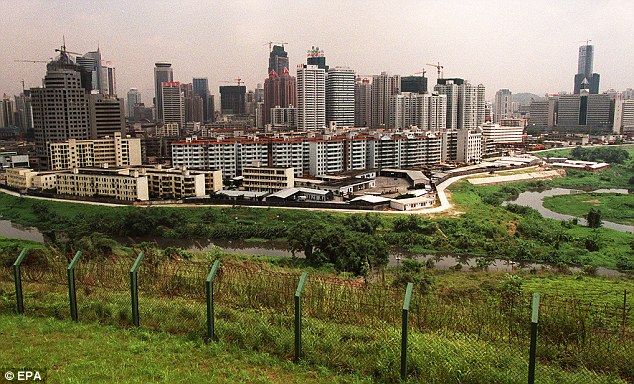
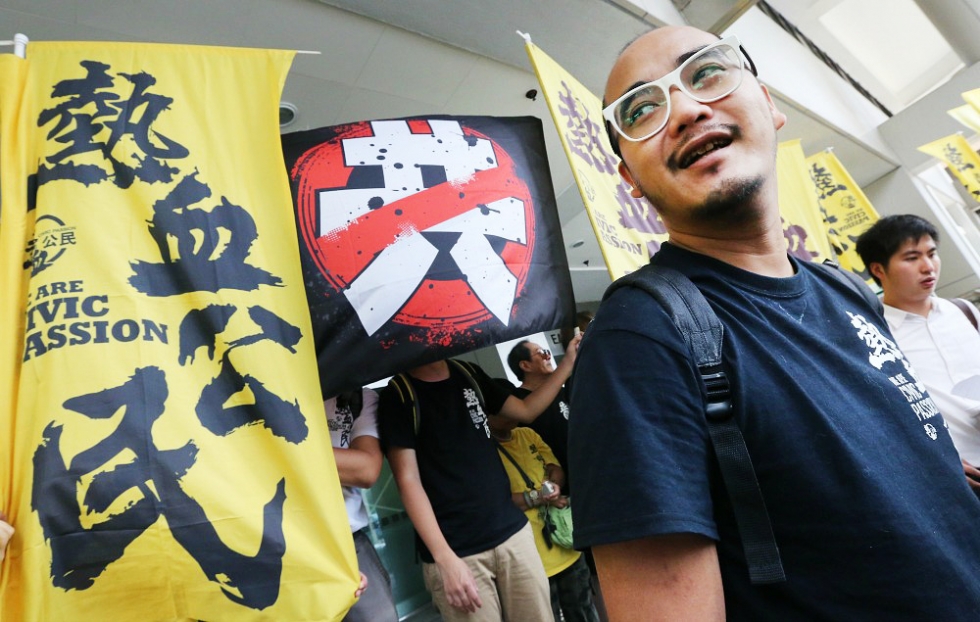
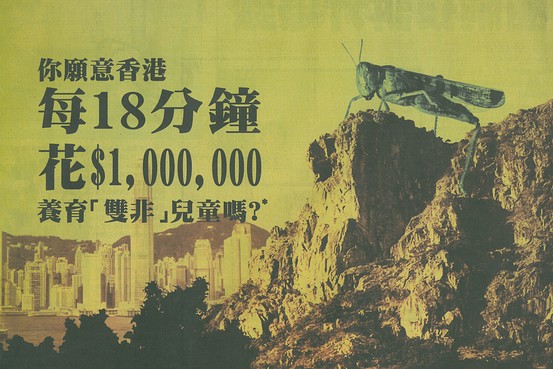
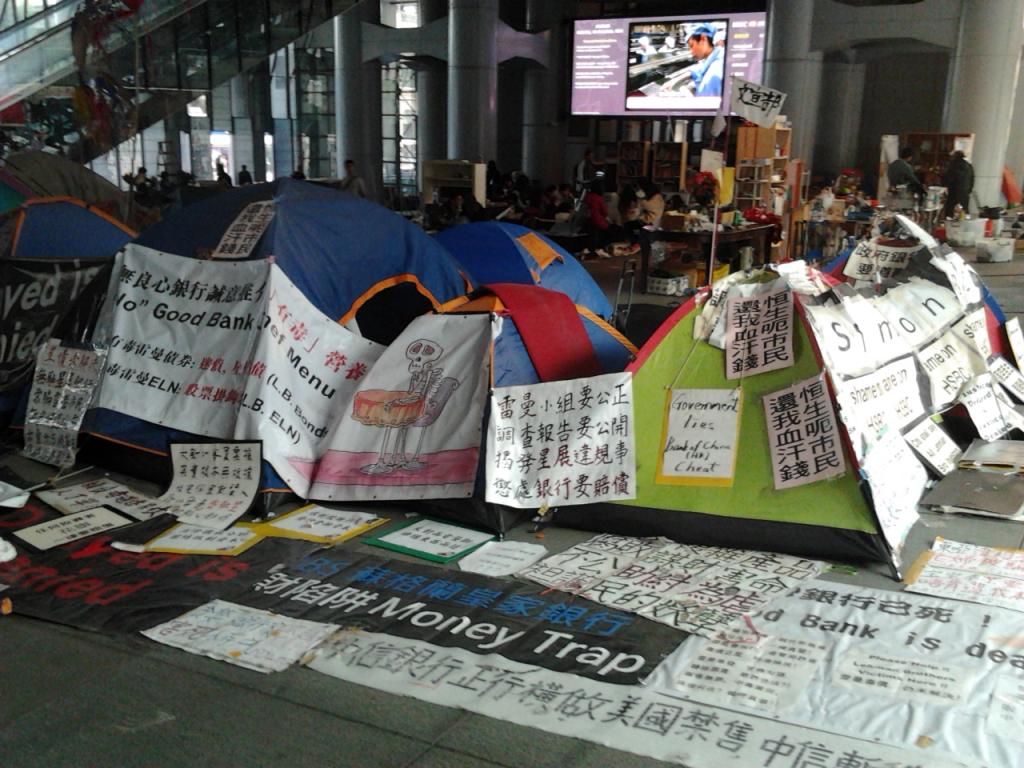
2 comments:
Maoism is not even Marxism. Marxism is about the Proletariat taking power, through the self activity of the proletariat. Mao's guerrilla struggle was not a worker led revolution.
Lenin became a Trotskyist after Trotsky joined the Bolshevik Party and taking on board the program of Permanent Revolution.
I thought I would publish this comment even though it is published anonymously by yourself.
It contains the puerile statement that Lenin was a Trotskyist.
I said that Trotskyism would make you mindless and this statement is published here for posterity to record it.
The other comment accusing me of a cult of personality for publishing a song about Mao, the comment was meant has an insult so I did not publish it.
You you cannot speak one whole sentence without screaming Trotsky and suffer from his rhetorical infantile disorder like many Leftists in the West.
It is you who are the mindless cultist.
Clearly I am having dialogue with the deaf and it was my mistake to think that even subjectively you were seriously interested in revolution - you clearly carry to much baggage with you that weighs you down and for you to even enter the 21st century.
The Russian Revolution dominated the 20th Century - The Chinese Revolution and Counter Revolution will dominate the politics of the 21st century has a new wave of revolutions led by our Indian and Philippine comrades will advance the theory and practice of Marxism Leninism Maoism.
Trotskyism is dead and dying - all it can do is retard and disrupt revolution in the West for a time - it is just a footnote in history.
Leninism was an ideological eagle compared to the Trotskyist fly and returning to your comment that Lenin was converted to Trotskyism - you must hear the laughter you have provoked amongst comrades by showing your historical amnesia.
Revolutionary History is a subject of which you are profoundly ignorant to make such a comment.
Post a Comment